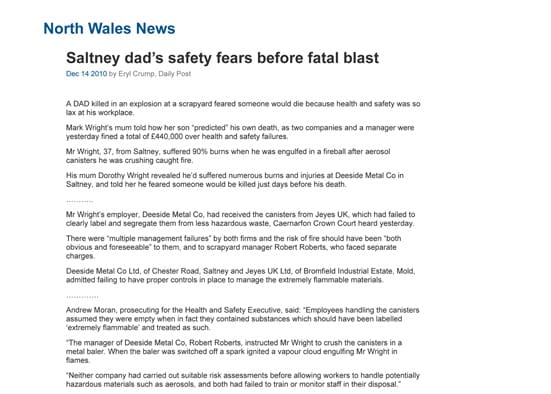The treatment of burns in a workplace setting has always been a contentious matter between first aid trainers and equipment suppliers. First aid says that initial treatment of burns should be the application of cold running water but equipment suppliers often include burn treatment creams. What’s the evidence for burn creams?
In December 2010, the Cochrane Library produced a collection of reviews concerning the treatment of burns. Some of the information in the collection should be of great use and interest to workplace first aiders.
One report states:
“In the early management of minor burn injury,do silver based products improve burn infection control and healing?There is not enough evidence to decide whether silver based products improve healing, infection control, pain or other outcomes in people with minor burns.” Continue reading “The evidence on first aid treatment of burns”

 SafetyAtWorkBlog has been following the discussions about
SafetyAtWorkBlog has been following the discussions about 